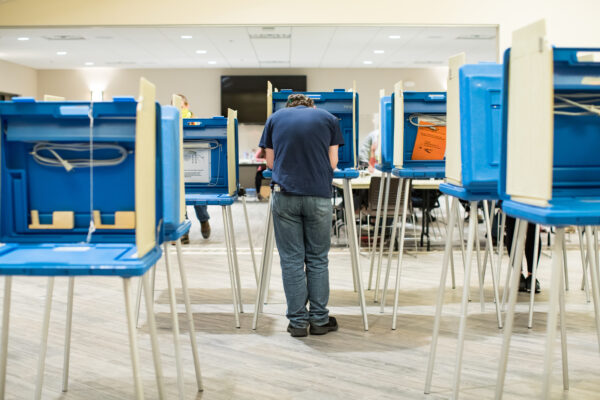In the run up to the 2020 elections, the ACLU of Wisconsin embarked on an unprecedented effort to protect voting rights, defend democracy, and encourage all Wisconsinites - particularly those who are typically less likely to vote - to turn out and cast their ballots.
Some of the voting work that we are most proud of concerns the voting rights of people held in county jails. On any given day, there are some 1,3000 people in Wisconsin detained in county jails, the vast majority of whom can still vote. Although most of these people remain eligible to vote under the law, we discovered that many cannot do so in practice.
In July 2020, we released a report with All Voting is Local and the League of Women Voters’ of Wisconsin documenting the ways in which county jails have failed to adequately accommodate eligible voters in custody, resulting in the effective disenfranchisement of potentially thousands of people.
Following up on last year’s investigation, we sent public records requests to all of Wisconsin’s county sheriffs, requesting updated information about policies and procedures related to voter registration, voter participation, and voting education and communication inside jails. Just last month, we released an updated report summarizing our findings.
Based on the new data for 2021, we can see that some county jails have made some progress. Of the 55 counties that responded to our requests, 70 percent reported having at least some kinds of voting policies in place, a notable improvement from the less than half that had policies in 2020. In more encouraging news, 32 percent of counties either created or improved their jail based voting procedures after we released the first report. While it is good that many counties are taking implementing voting policies and procedures more seriously, we are still far from ensuring equal access to the ballot in jail.
According to the statistics provided by the responding counties, only 50 people in jail were reported to have voted in the 2020 election, a number that pales in comparison to the roughly 13,000 jailed individuals. To improve access, our report encourages sheriffs and jail administrators to make an effort to expand voter registration, vote by mail, and in-person voting opportunities. This means developing standardardized processes that allow everyone to check their registration status, register to vote, request and return absentee ballots, and vote. We encourage counties to start collecting election data and verifying that ballots are actually being counted. We also have various reccomendations for election admininstrators and the state legislature laid out in the report.
We cannot overlook the rights of eligible voters in jail who deserve a choice in what the government that holds them in custody looks like. Voters in jail have a voice and they have every right to be heard.

